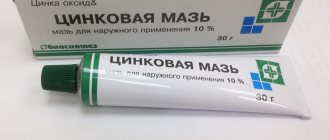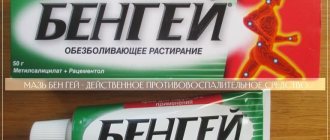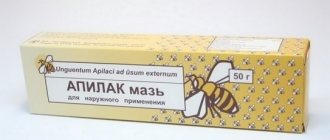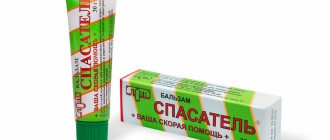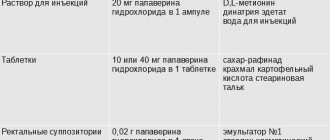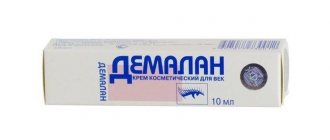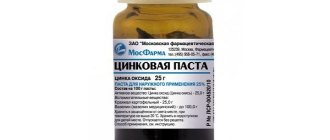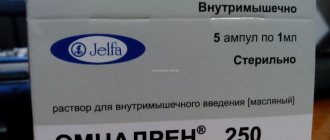According to statistics, every year more than 0.5 million Russians receive burns of varying severity. Of these, more than 100 thousand people end up in hospital. Thermal damage to the dermis accounts for about 90% of all cases.
Dermatologists know that the treatment method and the rate of tissue regeneration depend on the area, degree and depth of damage to the dermis. Timely assistance neutralizes the unwanted and extremely painful consequences of the injury. Zinc ointment for burns is an effective remedy for the treatment of skin pathologies and associated complications. Today's article is devoted to this medicine.
What is zinc ointment
This is a time-tested, inexpensive medicine for eliminating skin inflammation. Has an antiseptic, astringent and drying effect. The main active component of the ointment is zinc oxide. Available in the form of a viscous, homogeneous white or grayish substance. Packaged in glass or plastic bottles or metal tubes of 25 g.
The base of the ointment is white paraffin or petroleum jelly. Based on the zinc content, the dosages of the drug are 5, 10 and 20%. Variants of the drug with salicylic acid or sulfur are also produced, which have a similar effect.
Description of the drug
Zinc ointment is a universal preparation used exclusively for external treatment of damaged epidermis. Its main purpose is to eliminate acne and pimples. The zinc-based composition helps restore the skin, which is why it is actively used in anti-burn therapy.
Zinc ointment is effective against many dermatological diseases
The pharmaceutical product is prescribed for streptoderma, acne, diaper rash, scratches and dermatitis. Doctors prescribe it to patients with bedsores and trophic ulcers. In some cases, the medication is used for vulvovaginitis.
Pharmacological action and group
Ointment (cream) based on zinc oxide is a dermatoprotective medication. As for the pharmacological group, this is a product for external skin treatment with pronounced drying and astringent properties. Thanks to these features, liniment is widely used for thermal damage to the dermis.
Pharmacological action of the ointment after application to the problem area:
- After penetration into the epidermal cells, zinc oxide slows down biochemical processes.
- In damaged cells, the secretion of compounds that contribute to the accumulation of exudate in tissues is stopped. The expansion of capillaries is suppressed, which eliminates the possibility of swelling.
- Zinc reacts with proteins due to which a protective film is formed on the surface of the epithelium, which eliminates the likelihood of reproduction and spread of infections and pathogenic microorganisms.
The effectiveness of the ointment has been confirmed exclusively for 1st degree burns, which are characterized by local swelling, redness of the epithelium, and severe burning. In case of serious damage to the dermis (when blisters, vesicles, etc. form), treatment is carried out exclusively in a hospital setting under the supervision of a doctor.
Composition and release form
A distinctive feature of zinc ointment is the minimum number of components. In fact, the only active element is zinc oxide. Thanks to it, wound healing and tissue regeneration are activated, and the risk of infectious relapse is leveled. The basis of the drug is Vaseline (ratio 9 to 1).
The medication often includes auxiliary ingredients:
- wax;
- dimethicone;
- mineral extracts;
- menthol;
- fish fat.
Salicylic-zinc ointment has become widespread. This is the best combination of zinc and salicyl to combat burns and dermatological pathologies.
The drug is available in the form of paste and ointment.
The distinctive features of the first are an increased percentage of fat content in the composition and a thick consistency. The paste is prescribed by a doctor to obtain a pronounced therapeutic effect with minimal penetration of active compounds into the main bloodstream. In pharmacies, the medicine is sold in dark glass jars (50, 40 and 25 g) and plastic/aluminum tubes of 30 g. The concentration of the active substance can vary from 2 to 35% (in rare cases - 60%). The drug is supplied in cardboard packages with annotations and instructions for use.
What does zinc ointment treat?
Zinc has a pronounced anti-inflammatory effect, and in combination with petroleum jelly acts as a protector, forming a protective softening film on the skin. This allows the drug to be used for various injuries of the integument:
- diaper dermatitis;
- insect bites;
- mechanical injuries;
- abrasions, abrasions;
- bedsores;
- dermatitis, eczema;
- chickenpox rash, urticaria;
- other lesions, including infectious ones.
Due to its properties to disinfect, soften and whiten the skin, zinc ointment is popular as a cosmetic product. Its use helps smooth out fine wrinkles, even out facial tone, prevent inflammatory formations and other imperfections.
The drug loosens the stratum corneum of the epidermis, activates the process of regeneration and cell renewal, stimulates microcirculation, and prevents tissue damage from free radicals. As a result of regular use, the severity of facial folds decreases, pores narrow, microcracks, pigment spots and freckles disappear, and emerging pimples do not leave noticeable marks.
Indications for use
The drug does not have a toxic, carcinogenic or mutagenic effect, therefore it is approved for use even in children, the elderly, and newborns. There are a number of indications for which zinc ointment is used in dermatology:
- atopic dermatitis;
- seborrheic dermatitis;
- allergic rashes;
- weeping eczema;
- contact dermatitis;
- herpes;
- different types of lichen.
Zinc ointment is needed to combat diaper rash; it helps well in the presence of bedsores. With its help, you can speed up the healing of cuts, wounds, abrasions, scratches and any type of damage to the integrity of the integument. This remedy is one of the most common in medicine to protect the outer layer of skin from further damage. With its help, you can disinfect wounds that are not complicated by purulent processes.
In children, the drug is widely used for diaper dermatitis - this pathology occurs in babies due to prolonged skin contact with urine and feces.
In cosmetology, the product is popular for acne on the face, youth acne, blackheads (comedones), and excessive oily skin.
Zinc can not only disinfect and dry, but also regulate the balance of the sebaceous glands, having a cumulative effect. The ointment helps against age spots - it lightens them, making them less noticeable. The product also copes well with the effects of sunburn.
How to use zinc ointment correctly
The drug must be applied to cleansed skin. It is recommended to pre-treat damaged epidermis with an antiseptic: for example, Miramistin. The required amount of product must be carefully distributed over the affected areas. The procedure should be repeated 1-3 times a day, depending on the problem.
It is not advisable to cover the skin with film, patches or bandages after applying the medicine, so as not to create a greenhouse effect. When using other external medications simultaneously, it is necessary to discuss their compatibility with your doctor.
Zinc ointment for the treatment of children
The drug is approved for use from 0 years. For diaper rash, diaper dermatitis and other skin problems, the ointment should be applied with light movements, treating all affected areas. The procedure is repeated after each diaper change and water procedures until redness and irritation disappear.
For older children, burns, abrasions, chickenpox blisters or mosquito bites are treated with zinc ointment, applying the product exactly to the affected area as needed. It is not advisable to use the medicine for more than 7 days in a row, so as not to dry out the skin.
Analogues and other information
How many analogues of the product are there in pharmacies? There are not so many of them, some have a higher price compared to Zinc ointment and paste.
| A drug | Composition (main components) | Price, rubles |
| Desitin | Zinc oxide | 260 |
| Tsindol | Zinc oxide | 160 |
| Zinkundan | Zinc undecylenate, salicylanilide | 450 |
| Salicylic-zinc paste | Zinc oxide, salicylic acid | 85 |
| Diaderm | Zinc, essential and base oils | 170 |
Overdose of this drug is impossible; no cases have been reported. , dark pigment spots may appear on the skin.
, which should be taken into account when treating various chronic pathologies of the face and body.
You should not overuse ointment to treat acne on the face - it can cause severe drying of the skin.
Sometimes it can be difficult to wash off Zinc ointment or paste from the skin of the face; in this case, it is recommended to use tar soap. On the contrary, patients with dry skin should use only special nourishing washes, milk, tonics, and after the procedure apply a moisturizer to the face.
How to use zinc ointment for the face
For juvenile acne, it is recommended to apply the drug to the inflammatory elements. You should first remove makeup from your face and wash your face. For acne, salicylic-zinc or sulfur-zinc ointment has a more effective effect, this should be taken into account with frequent severe skin rashes. When treating acne, it is useful to enrich your diet with foods containing zinc and copper: legumes, nuts, beef liver, chicken eggs.
With the initial signs of aging, the ointment can be used as a care product: as a softening, whitening and smoothing mask:
- Apply as a cream, a thin layer to cleansed facial skin;
- the medicine cannot be used under a foundation;
- The application procedure should be repeated 1–3 times a week; more frequent use of the ointment may result in drying out;
- when used as a mask, wash off the remaining ointment from the face after 20–30 minutes, then apply a nourishing or moisturizing cream;
- Avoid applying zinc ointment to the thin skin around the eyes.
If necessary, it is allowed to mix the drug with other cosmetics: aloe juice, sea buckthorn or almond oil.
After applying zinc ointment, you should appear less often in the open sun. Ultraviolet light enhances the drying effect of the drug, which can harm turgor.
Contraindications and side effects
The main and strict contraindication is an allergy to zinc, starch, additional components of the drug, hypersensitivity to the ingredients. Also among the prohibitions are acute purulent processes on the skin and mucous membranes. Ointment can be applied to these areas only after surgical treatment and with the approval of a doctor.
Pregnancy is not a prohibition for treatment with zinc; this drug is harmless for expectant mothers and the child.
The active components of medications do not pass into breast milk, so zinc products can also be used during lactation. But it is preferable to buy a paste to ensure that systemic absorption is excluded.
Occasionally, patients experience local side effects during therapy. In most cases, there is an allergic reaction to zinc and other substances that was not previously identified. Symptoms may include:
- peeling of the skin;
- rash, small spots;
- skin hyperthermia;
- redness;
- excessive dryness.
In this case, you should immediately refuse treatment. If there is no improvement, you should visit a doctor.

